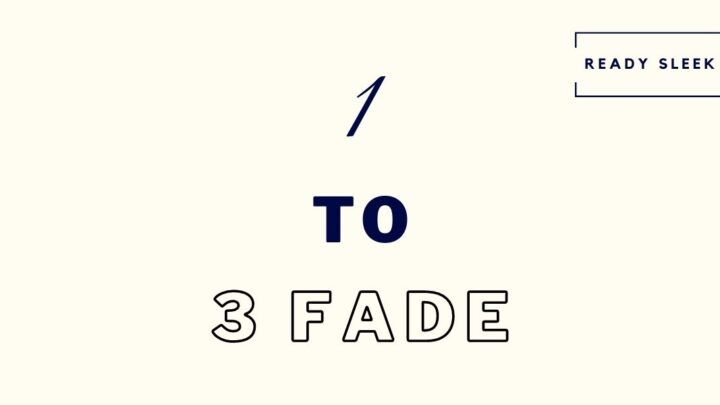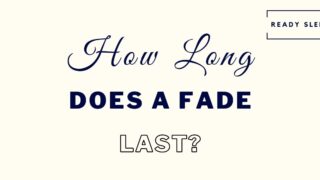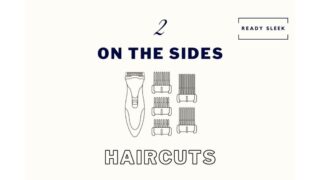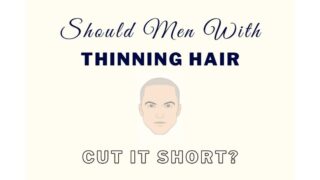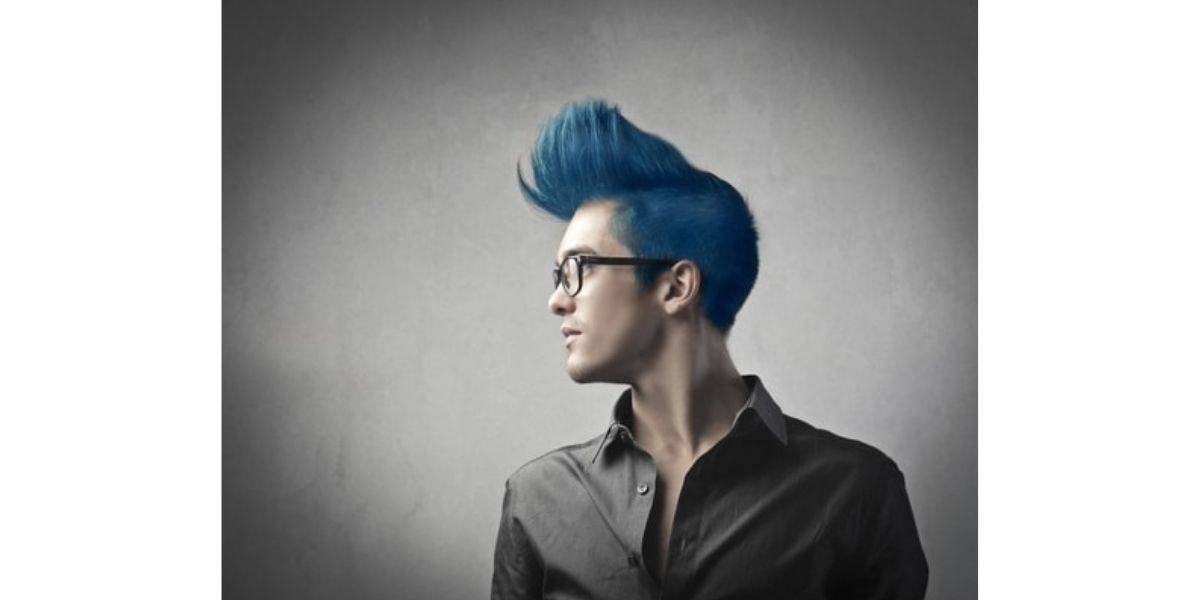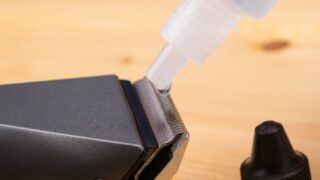Before sitting in that barber’s chair you need to know exactly what you’re going to ask for. There are plenty of fades out there and it’s easy to get them confused. You’re about to learn everything you need to know about the 1 to 3 fade.
Let’s get to it.
What Does A 1 To 3 Fade Look Like?
A 1 to 3 fade looks like this:

Image From Deposit Photos
As you can see, the sides and back have been faded – the length gradually increases in length from the bottom to the top.
While the difference in length is noticeable, there are no harsh lines. The lengths have been blended into each other seamlessly and this is what gives fades their characteristic blurred effect.
Having the length gradually increase from a #1 length at the bottom to a #3 length further up is a striking appearance due to the difference in length.
The contrast in length is large enough to really make the fade stand out and a core feature of the overall style itself.
As with any fade, the 1 to 3 fade can be included in any style you can think of. This one happens to be an undercut, because there’s a harsh transition between the sides and the slicked back hair on top.
1 to 3 fades are also great because they produce a nice and tapered appearance, as the hair looks fuller at the top of the sides than it does at the bottom.
This can have a narrowing and slimming effect on the face and also defines the jawline.
Overall, the 1 to 3 fade is a little more eye-catching than the 1 to 2 fade because the difference between the shortest length of the fade (the #1) and the longest length of the fade (the #3) is greater.
What Is The Definition Of A 1 To 3 Fade?
A 1 to 3 fade is an effect where the hair at the sides and back seamlessly transitions from a number 1 length (1/8 of an inch) at the bottom into a number 3 length (3/8 of an inch) further up.
In order to achieve this, a barber will gradually transition from a #1 length to a #1.5 and then a #2 before finally getting to the #3 length.
It’s this gradual transition that makes it look so effective.
Any lines that occur between the different lengths will be faded out by the barber using the clipper’s lever.
The 1 to 3 fade can be “low”, “mid”, or “high”, depending on where the #1 length starts to transition into the #3 length. I’ll be talking more about fade heights later on.
It’s also important to note that a 1 to 3 fade is an effect or feature and not a hairstyle in itself.
Telling the barber you want a 1 to 3 fade tells them nothing about what you want to do with the hair up top. It’s a feature that can be included in practically any hairstyle you can think of, just like any other fade.
1 To 3 Fade Examples
Here are a few examples of 1 to 3 fades to serve as inspiration during your next cut. While the sides will, of course, look similar – it’s how it syncs with the hair on top that may lead you to choose one over the other.
1 To 3 Fade With Quiff
Here’s a quiff style with a 1 to 3 fade at the sides and back.
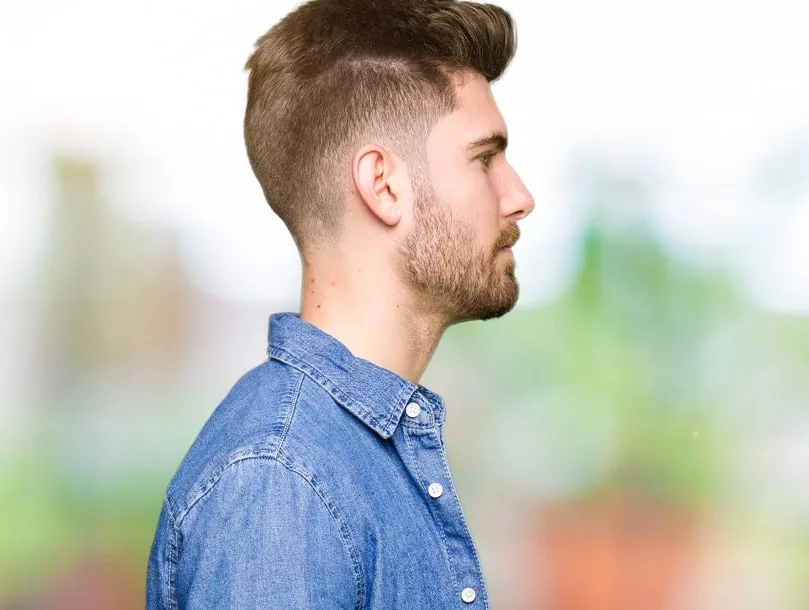
As you can see, the #1 length at the bottom of the sides and back gradually transitions into an approximate #3 length further up with no harsh lines in between them.
This can be called a “mid 1 to 3 fade” because the #1 starts to transition into the #3 approximately 1 inch above the ear.
It works great with the relatively tall and textured quiff up top. The tapering effect of the fade at the sides makes it look very short in comparison to the fullness and height of the hair up top.
The short sides draw even more attention to the hair up top.
This one is a good option for men with rounder or shorter face shapes. The slimming effect of the faded sides and the tall style on top both act to elongate the face.
1 To 3 Fade With Comb Over
Here’s a 1 to 3 fade at the sides and back with a simple, textured comb over on top.
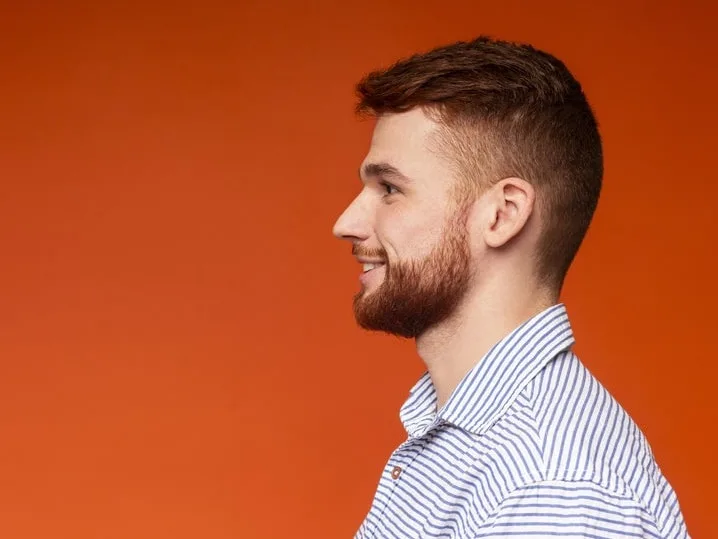
It’s a good example of how a fade can look extremely understated and professional when the hair on top is kept straightforward and well-groomed.
As the hair further up the sides and back is kept relatively long (around a #3 length), it blends into the longer, textured hair on top very well.
This is also a great example of how a 1 to 3 fade can be blended into a heavy stubble beard.
As you can see, the #1 length at the bottom of the sides tapers nicely into the top of the beard which then gradually increases in length as you move down towards the chin.
1 To 3 Fade With Crew Cut
Here’s a simple 1 to 3 fade with a subtle comb over/crew cut up top.
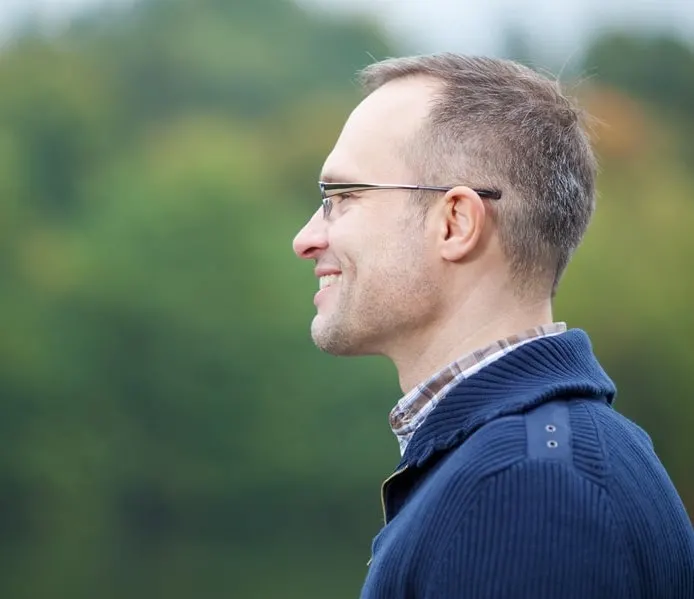
Crew cuts graduate (reduce in length) as you go from the front to the back and the sides are often faded to produce a nice and tapered appearance.
A 1 to 3 fade is a great fade option for a crew cut if this was the style you were going for.
While crew cuts are a buzz cut variation, the contrast between the longer, scissor-cut hair on top and the buzzed sides is usually greater than with a standard induction-style buzz cut.
However, it is almost as low maintenance, with minimal styling required. It’s a “set it and forget it” type of style that won’t demand much of your attention at all.
1 To 3 Fade: Low Vs Mid Vs High
1 to 3 fades can vary depending on the point at which the #1 length starts to transition into the #3 length.
Low 1 To 3 Fade
With low 1 to 3 fades, the #1 length starts to gradually transition into the #3 length approximately half an inch above the ear at the sides.
It’s a more subtle form of the 1 to 3 fade because only a small section of the sides and back is clipped down to the shortest length (#1).
As a significant proportion of the sides and back will be clipped down to the longest length of the fade (#3), the fade won’t be quite as striking overall.
It’s a good option for those that want a more subtle fade.
Mid 1 To 3 Fade
With mid 1 to 3 fades, the #1 length starts to gradually transition into the #3 length around one inch above the ear.
Mid fades are more attention-grabbing than low fades and mid 1 to 3 fades are no exception.
As around half of the sides and back will be clipped down to the shortest length (#1) before it starts to gradually increase, the fade is more prominent.
For a more detailed comparison between low fades and mid fades, read this article I wrote.
High 1 To 3 Fade
With high 1 to 3 fades, the #1 length starts to gradually transition into the #3 length around the level of the temples.
High fades are the most noticeable fades, simply because most of the sides and back will be clipped down to the shortest length.
So, with high 1 to 3 fades, most of the sides and back down will be clipped down to the short length of number 1 (1/8 of an inch).
This makes the fade a very core component of the overall style. It’s eye-catching, even more than a mid-fade would be.
Any higher than a high fade and you’d be delving into high and tight territory.
1 To 3 Fade Taper
A 1 to 3 fade taper is where the #1 length starts to gradually and seamlessly increase to a #3 length around the top of the sideburns. It’s essentially a very low fade, even lower than a low 1 to 3 fade.
With a 1 to 3 fade, only a very small portion of the sides will be trimmed down to the shortest length (#1). Essentially, the #1 length will only reach as high as the top of the sideburn at the side, and around 1 inch above the neckline at the back.
Most of the sides and back will be kept at the longest length of the fade (#3 length).
It’s the most subtle form of fade you can ask for, a great option if you’re simply looking to try it out and don’t mind that it isn’t very noticeable.
Conclusion
There you have it. Hopefully, everything you could ever want to know about this very specific type and length of fade.
What it looks like, what defines it, and more.
Enjoy.
Ready Sleek founder. Obsessed with casual style and the minimalist approach to building a highly functional wardrobe. Also a fan of classic, vintage hairstyles.

